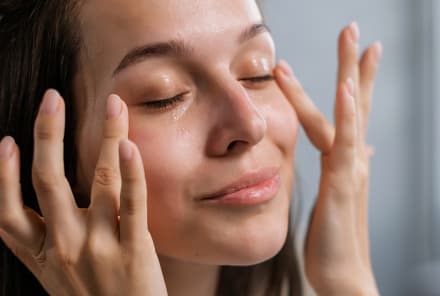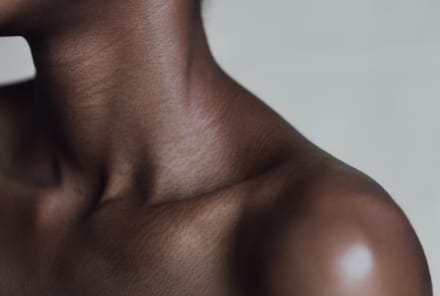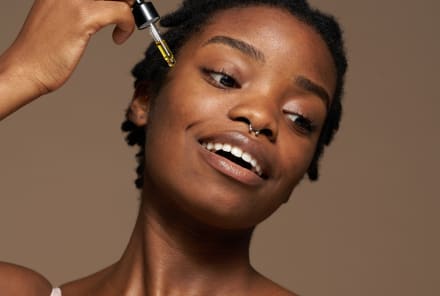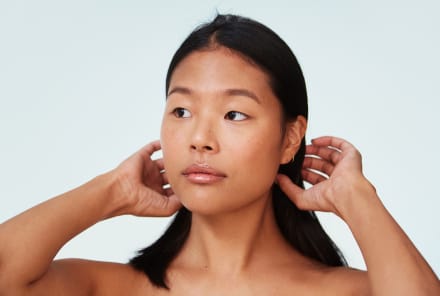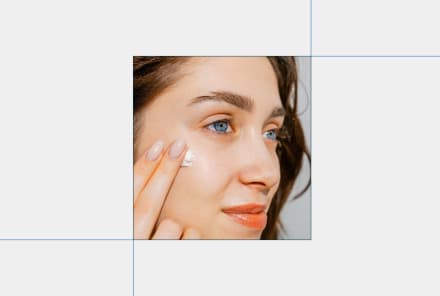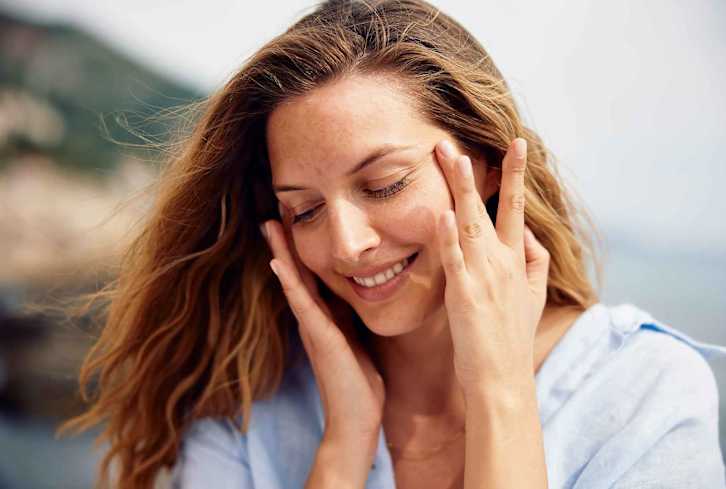Advertisement
5 Best Teas For Acne, Science-Backed & Dermatologist-Approved


We know tea has tons of health benefits for your full body—so it makes sense that it helps skin, too. In fact, tea's skin-healing qualities have been well documented anecdotally, historically, and yes, in modern research. Many of the acne-healing qualities associated with tea stem from the drink's antioxidant and anti-inflammatory powers; getting in enough antioxidants to fight free radicals as well as tempering overall inflammation is vital for glowing, healthy skin. And since acne is, by its very nature, an inflammatory condition, you'll help keep angry, red breakouts at bay.
Here, we rounded up the five best teas for acne. Sip your way to supple, bright skin.
Chamomile tea
A calming, soothing tea is a popular drink, along with being a popular ingredient in many topicals. "Chamomile tea is the best choice to reduce redness. It acts as an anti-inflammatory, inhibits inflammatory acne and rosacea, and has all-around calming properties," says licensed acupuncturist Antonia Balfour, LAc, who specializes in skin care. "Internally, it also aids in reducing stress and benefiting sleep." The latter has a more indirect effect, but as stress and lack of sleep wreak havoc on the skin and will exasperate acne, ingesting anything to help those will also help your complexion.
And as Joyce Park, M.D., board-certified dermatologist and global dermatology ambassador at bareMinerals, previously explained to us about the chamomile acne connection: "When used in topical skin care products, chamomile can help calm and soothe the skin," she tells mbg.
Green tea
There's a reason green tea has such a long history of use: "Green tea is widely regarded as one of the best all-around 'superfoods,' packed with antioxidants that reduce inflammation," says Balfour. "Topical use of green tea reduces sebum production, gets rid of oiliness, and protects against acne-causing bacteria. For rosacea sufferers who have sun sensitivity, green tea decreases the skin's reactivity to UV light."
Green tea's anti-inflammatory benefits are confirmed by many studies, mainly studying the protective effects of polyphenols1, or the category of antioxidants found in skin. Studies have found that topical application of polyphenols can help repair skin, protect it from sun damage, and even reverse signs of skin aging2 (like dark spots, fine lines, and wrinkles). Skin repair is a vital part of healing acne, especially so it doesn't leave behind residue from the blemish.
Rooibos tea
"Rooibos tea is an excellent choice for dryness. It leaves the skin moist and supple," notes Balfour. "It's a wonderful caffeine-free alternative, too, if you're not one to opt for that."
Again, the tea's main skin-saving qualities come down to the antioxidant profile, according to registered dietitian Emily Kyle, R.D. "This tea is quickly gaining popularity for its naturally caffeine-free, anti-inflammatory, health-promoting properties. Studies have shown3 that this tea is rich in powerful anti-inflammatory flavonoids aspalathin and nothofagin, which help to reduce oxidative stress in the body better than other flavonoids."
Parsley tea
This bitter tea has plenty of anecdotal information about helping reduce acne and improve overall skin appearance, as well as some studies confirming its medicinal use for overall health4. This is because of its high nutritional content: It is packed with vitamins A, C, and K; the minerals magnesium, potassium, and calcium; as well as chlorophyll and folic acid.
And as Brigitte Zeitlin, R.N., tells us, "The high vitamin content is going to be the main reason parsley might improve skin health. Vitamin A is a big part of that, especially with acne. Vitamin A promotes skin turnover." Topically we know this is true, but increasing the amount of vitamin A in your diet may have similar effects, as research shows5 that increasing your intake of vitamin A improves cell regeneration. For more information on the parsley-acne connection, read on here.
Hibiscus tea
Hibiscus tea has plenty of skin care qualities, from helping your natural levels of collagen and elastin to reducing breakouts to balancing oil production. Hibiscus is known for its rich level of antioxidants6, including vitamin C and beta-carotene7. These can aid in the skin cell regeneration process; yet for acne specifically, the plant also has natural alpha-hydroxy acid properties, making topical use beneficial as well.
It contains malic acid and citric acid8, explains Michele Green, M.D., a cosmetic dermatologist in New York City, which gently exfoliate and brighten the skin. And while scientists haven't studied AHAs specifically found in hibiscus, the benefits of AHAs9, in general, are well established.
When applied topically, AHAs slough away dead skin cells and encourage skin cell renewal10. Through this gentle mode of exfoliation, AHAs can help reduce hyperpigmentation, increase skin clarity, and "encourage fresher and smoother-looking skin," shares Green.
How can you use tea topically to clear up breakouts?
While drinking tea will give you an inside-out glow, you can also DIY some tea spot treatments or toner. (Bonus: It's easy and cheap, and you can do it at the same tea you're drinking up; we're all for multitasking here, folks.)
For a spot treatment, one classic route is to simply brew your cup, let the bag cool, and then place it directly on your breakout for a few minutes. The tea will infuse antioxidants to your epidermis, help hydrate the skin, and calm inflammation. (Just be mindful you are not putting it on already irritated or broken zits, as that can worsen the skin; also use organic tea bags.)
For a toner, or "wash," you'll brew two cups: "In the evenings, brew one cup for drinking and another to use as a wash. Let the 'wash tea' steep for 10 minutes, then cool down to a lukewarm temperature. Use cotton balls or a washcloth to submerge in the tea. Apply to the face, and allow it to dry naturally," says Belfour. An important note: If you are wearing makeup, you'll need to wash your face prior to doing this, as you'll need a proper cleanser to fully remove it. (And thus, this acts more as a toner post-wash.) If you've decided to forgo makeup for the day, you can skip the wash step and use the teas as a replacement. After, follow with your evening skin care routine as normal.
The takeaway.
Glowing skin is just a few cups away, with the right teas, that is. This collection is science-backed and derm-approved. Plus, there are so many ways to use it, be it from drinking, as a toner, or as a spot treatment.
10 Sources
- https://www.ncbi.nlm.nih.gov/pmc/articles/PMC3390139/
- https://www.ncbi.nlm.nih.gov/pmc/articles/PMC2813915/
- https://www.ncbi.nlm.nih.gov/pubmed/19419525
- https://www.ncbi.nlm.nih.gov/pubmed/24660617
- https://www.ncbi.nlm.nih.gov/pmc/articles/PMC3583891/
- https://www.ncbi.nlm.nih.gov/pmc/articles/PMC5613902/
- https://www.ncbi.nlm.nih.gov/pubmed/30426586
- https://www.sciencedirect.com/science/article/pii/S030881461400692X
- https://www.ncbi.nlm.nih.gov/pmc/articles/PMC4277239/
- https://www.ncbi.nlm.nih.gov/pmc/articles/PMC6017965/


